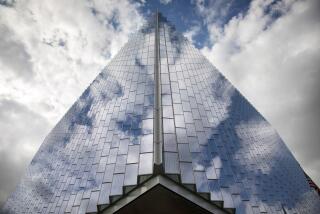Worst Fire Season Feared Because of Brush Dieback
Los Angeles may have the worst fire season ever this summer because of the dieback that has killed about half the wild brush in the county, the chiefs of the city and county fire departments warned last week.
The dieback, which began five years ago, has been steadily worsening and has killed all the brush in the hardest-hit areas of the San Gabriel and Santa Monica mountains, fire and forestry officials said.
The dead brush ignites more easily, burns hotter and causes fires to spread faster, which will make brush fires in the coming summer and fall months more dangerous than in past years, county Fire Chief John W. Englund.
“We have the potential of the worst fire season ever,” said Englund, whose official title is county forester and fire warden.
He estimated that “40% to 50% of the brush in the county has died.”
In the past, brush fires were most dangerous during periods of Santa Ana winds, but could generally be controlled the remainder of the time with little or no danger, he said. The dieback has changed the picture, however, causing the fire danger season to begin earlier and increasing the danger of a catastrophic fire, he said.
“It’s becoming increasingly common to have fires in seasons when we didn’t have them before, and with a bad wind, it’ll be even worse,” he said.
Los Angeles Fire Chief Donald O. Manning said the death of the vegetation has left “up to 60 tons of fuel per acre” in mountain neighborhoods of “multimillion-dollar homes.”
Englund and Manning joined federal and state forestry officials at a news conference last Wednesday at a county Fire Department camp in Altadena, urging that homeowners in brushy areas clear vegetation away from their homes and be more alert for arsonists.
The cause of the dieback is not completely understood, but it is believed to be a combination of factors, including damage by a root fungus, botryosphaeria ribis, and a weather pattern that included heavy rains in 1982 and 1983 followed by years of drought.
The fungus, identified by state researchers in 1986, is usually present in the chaparral and apparently cannot harm healthy plants by itself, said Philip J. Riggan, a scientist with the U.S. Forest Service who has been the leading researcher on the dieback. But the fungus apparently attacks brush that has been weakened by other factors.
There is increasing, but not yet conclusive, evidence that air pollution also plays a role in weakening the brush, Riggan said. The dieback is heavier in high-pollution areas, such as the slopes of the San Gabriel Mountains that face the city, than in low-pollution areas such as the western Santa Monica Mountains near the ocean.
The fire officials said they are especially worried by the widespread death of ceonothus, or wild lilac bushes.
The live bushes, which have a high moisture content, resist burning and slow down the spread of fires. Dead and dry, they burn explosively.
County Fire Department researchers who placed instruments in the path of fires in areas devastated by the dieback found that soil temperatures rose as high as 1,200 degrees Fahrenheit, twice as hot as soil temperatures in fires fed by live vegetation.
The dieback, which first appeared in the San Gabriel Mountains, is still most serious in Los Angeles County, researchers and fire officials agreed. But it has spread throughout Southern California and is killing brush from the Mexican border to Santa Barbara and inland to Riverside.
NASA has been using satellites and high-altitude flights by ER-2 planes--an earth resources version of the U-2 spy plane--to monitor the extent and spread of the dieback, which shows up on infrared film. The latest overflight was made last Wednesday.
In the last six months alone, there has been “a dramatic increase, at least 20%,” in the amount of dead brush, said James Brass, a researcher from the NASA office at Moffett Field near San Francisco. In some areas, only 30% of the chaparral that was alive in 1982 pictures has survived, he said.
Riggan and County Fire Department Capt. Scott Franklin, who have been tracking the dieback, said that in recent months it has spread for the first time to altitudes above 3,000 feet and is destroying brush at elevations of more than 5,000 feet.
In some of the worst hit areas, such as the San Gabriel slopes above Sunland-Tujunga and La Canada Flintridge, virtually all the brush is dead, they said. “The satellite data backs that up,” Brass commented.
“I’m amazed at how bad it’s gotten,” Riggan said.
Englund said the dead brush “will be there until it burns, because that’s the only way to get rid of it.
“We better hope for a lot of small fires over the years.”
More to Read
Sign up for Essential California
The most important California stories and recommendations in your inbox every morning.
You may occasionally receive promotional content from the Los Angeles Times.










